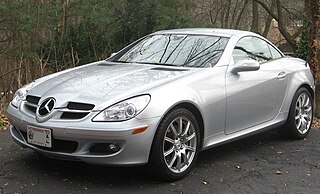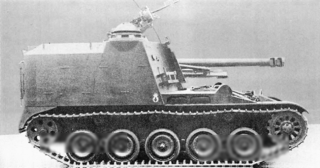External links and Reference
| This toy-related article is a stub. You can help Wikipedia by expanding it. |
Tamiya Rough Rider was the very first of Tamiya's SRB (Special racing buggies) series. These according to Tamiya made Radio Control Models accessible to everyone. The design is famous for its fibre glass chassis with rear torsion bars and front hairpin springs. These models originally cost 18,000 yen. They are very popular these days to collectors being first in the series that produced legends like the Sand Scorcher and the Super Champ. These days, MIB (Mint in Box) examples of this model are very rare and change hands for a lot of money. Even what can only be described as wrecks change hands for good money.
| This toy-related article is a stub. You can help Wikipedia by expanding it. |

Suspension is the system of tires, tire air, springs, shock absorbers and linkages that connects a vehicle to its wheels and allows relative motion between the two. Suspension systems must support both road holding/handling and ride quality, which are at odds with each other. The tuning of suspensions involves finding the right compromise. It is important for the suspension to keep the road wheel in contact with the road surface as much as possible, because all the road or ground forces acting on the vehicle do so through the contact patches of the tires. The suspension also protects the vehicle itself and any cargo or luggage from damage and wear. The design of front and rear suspension of a car may be different.
The Tamiya Blackfoot was a 1/10-scale, electric radio controlled model monster truck produced by the Tamiya Corporation of Japan. It was released October 8, 1986 and produced through 1993.

A Baja Bug is an original Volkswagen Beetle modified to operate off-road, although other versions of air-cooled Volkswagens are sometimes modified as well. Baja bugs often race in off road desert races such as the Baja 1000. There are different classes for bugs, namely class 11, class 5 1600, and class 5 unlimited. According to Score International, a world renowned desert racing association, class 11 is a stock VW beetle with modifications limited to ground clearance and strength. Class 5 1600 rules state that a 1600 cc vw engine must be used and the car must have the exterior appearance of a "baja bug" with body modification limited to whatever cutting is needed to install a consumer baja kit. Class 5 unlimited is any 4 cylinder VW-style engine, and it must have Baja-style fenders and side panels, and VW-style suspension.

Mini 4WD is any miniature model within the mini scale of between 1/20 (1:20) to 1/48 (1:48) Scale (ratio). From 1986 to 2019, the term is popularized predominantly (99%) by a 1/30 (1:30) scaled, AA battery powered plastic model race car without remote control. All four (4) wheels are direct-drive, thus "4WD" for 4-wheel drive, as opposed to "AWD" or All-wheel drive. This particular type of Mini 4WD uses horizontal side rollers to guide the vehicle along the vertical walls of the un-banked track for steering, providing speeds from 14 to 65 km/H on the track. At scale,, 1:1 speed represents 420 to 1,950 km/H or 270 to 1,200 mph.

The Dodge Power Wagon is a four wheel drive medium duty truck that was produced in various model series from 1945 to 1980 by Dodge, then as a nameplate for the Dodge Ram from 2005 to 2013, and, most recently ‘13-present, as an individual model marketed by Ram Trucks. It was developed as the WDX truck, and until about 1960 it was internally known by its engineering code T137 – a name still used for the original series by enthusiasts.

The second generation Mercedes-Benz SLK, internally designated model R171, is a two-passenger, front-engine, rear-drive, retractable hardtop roadster, unveiled at the 74th Geneva International Motor Show — and manufactured and marketed for model years 2004–2010. Currently in its third generation and manufactured at Mercedes' Bremen plant, the SLK nameplate designates Sportlich (sporty), Leicht (light), and Kurz (compact).
Air suspension is a type of vehicle suspension powered by an electric or engine-driven air pump or compressor. This compressor pumps the air into a flexible bellows, usually made from textile-reinforced rubber. Unlike hydropneumatic suspension, which offers many similar features, air suspension does not use pressurized liquid, but pressurized air. The air pressure inflates the bellows, and raises the chassis from the axle.
The Tamiya Sand Scorcher was the sixteenth 1/10-scale electric radio controlled car kit released by Japanese model manufacturer Tamiya Corporation. First introduced on December 15, 1979, its high level of detail and realism make it one of the most sought-after vintage R/C models today.

Rochdale cars were a series of mainly glass fibre bodied British sports car made by Rochdale Motor Panels and Engineering in Rochdale, Greater Manchester, England between 1948 and 1973. The company is best remembered for the Olympic coupé made between 1959 and 1973.
The Tamiya Clod Buster is a 1/10-scale radio controlled monster truck released September 21, 1987 by the Tamiya Corporation. With its four-wheel drive, four-wheel steering, twin Mabuchi RS-540 motors and 165 mm tires it quickly became one of Tamiya's most popular radio controlled model kits.
The Marui Big Bear Datsun (MT-59-RC-4) was an early 1/12-scale electric "monster truck" radio controlled car manufactured and distributed by Japanese hobby and airsoft gun manufacturer Tokyo Marui.
Kyosho Corporation is a model car company based in Tokyo, Japan. The brand operates internationally under the name KYOSHO. The company's main office is located in Chiyoda, Tokyo, and the production headquarters are located in Atsugi, Kanagawa.
The A1 Grand Prix car was a vehicle designed to compete in the A1 Grand Prix. The car was standardised for every team to provide a level playing field for competing nations. It was designed to reduce the volume of "dirty air", allowing drivers to close in on the car in front, encouraging overtaking. The bodywork was mainly pre-impregnated carbon fibre composites. From 2008–09 Ferrari was consulted on the design and manufacture for all A1 Grand Prix cars.

The Tatra 148 was a truck produced in Czechoslovakia by the Tatra company.
The Tamiya TXT-1, which stands for Tamiya eXtreme Truck, was one of Tamiya's 1/10 scale radio controlled (RC) Monster Trucks.

A mini sprint is an American type of open-wheel racing vehicle. Mini sprint cars resemble the shape of a full-size sprint car and the size of a midget car. Although often used liberally to describe several different types of motorcycle-powered open-wheel racing cars, the term mini sprint actually applies to cars that have an upright-style chassis, a center-mounted 4-cylinder motorcycle engine with a displacement between 750 to 1200cc, and dimensions and appearance that are similar to today’s midget. Mini sprints are chain driven and use 13-inch (33 cm) wheels and tires.

The Cadillac Series 355 was manufactured by Cadillac from 1931 to 1935. They were 8-cylinder cars, sold in several models: a 2-door club coupe, a 2-door convertible, 4-door convertible, a 4-door sedan a 4-door town car and a 4-door limousine.

Jawa 250 Type 353 was a standard motorcycle designed and manufactured by Jawa Motorcycles in Czechoslovakia starting from 1954 till 1962. This motorcycle succeeded Jawa Perak 250 in the year 1954 and later Jawa 250 Type 559 succeeded Jawa 250 Type 353 in the year 1962. The motorcycle was also manufactured in India by Ideal Jawa under license of Jawa Motorcycles from 1962 to 1973. Initially Ideal Jawa imported these motorcycles as CKD units and assembled in Mysore and sold them as the construction of the factory was not complete. Some variants of the same motorcycle were manufactured in Turkey and China. These motorcycles were famous for their symmetrical design language, ease of maintenance and reliability. This was the first Jawa motorcycle to have rear suspension springs, hence these were also called as "Kývačka 250" which translates to Spring 250 in English. There were basically four variants of Jawa Type 353.

The Mk 61 105 mm Self-Propelled Howitzer was a French self-propelled artillery piece designed and built during the late 1950s for the French Army.